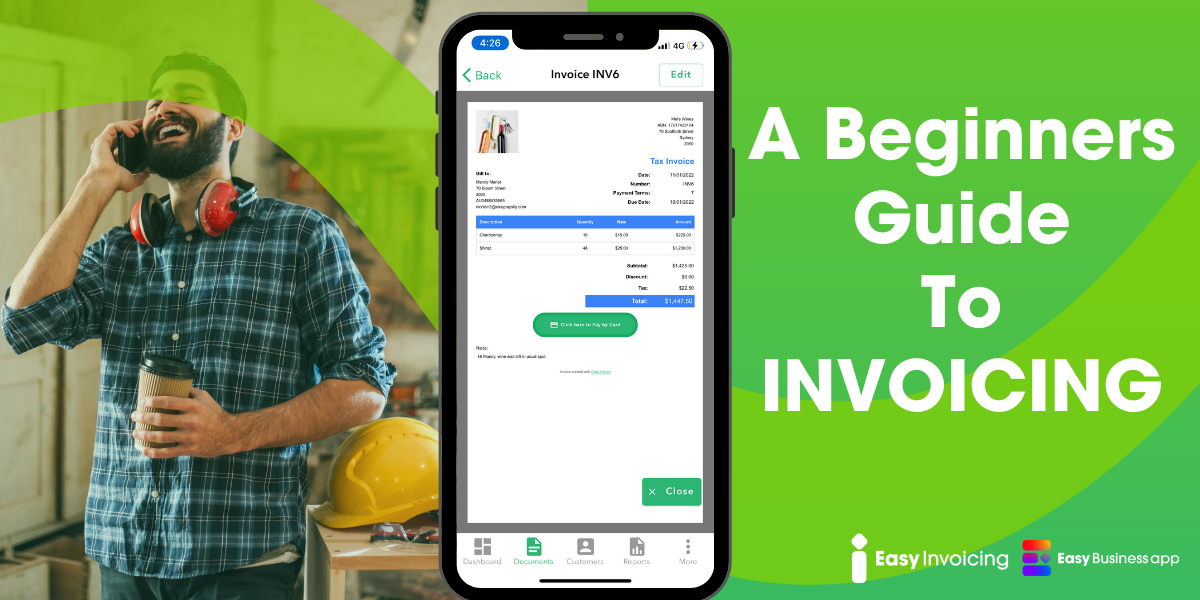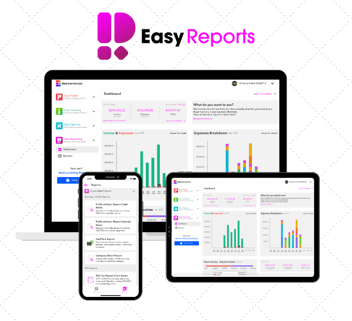A Beginner's Guide To Invoicing

Whether you’re a contractor, freelancer or sole trader, sending an invoice for your work is one of the most important parts of your job. How the invoice looks, what the bill includes, and when you send it can significantly impact how your clients or customers perceive your work.
To help you avoid sticky situations, being paid late and build stronger relationships with clients, here is our complete guide for creating and sending invoices that are sure to impress.
What is an invoice?
Before we get into the nitty-gritty of how to write an invoice, let’s start with the basics — what is an invoice?
Simply put, an invoice is a request for payment for the provision of goods or services. An invoice should list both the goods or services provided and the amount owed for this. It’s important to note that invoices also serve as tax documents, and therefore copies need to be kept as a record of your earnings, as well as any taxes that were collected as part of the transaction.
Different types of invoices
Now that you know what an invoice is, let’s determine the different types. There are several different types of invoices, including:
- Regular invoices — Used by businesses not registered for goods and services tax (GST).
- Tax invoices — Used by businesses registered for GST.
- Pro forma invoices — To show the cost of goods, but it is not an official sale record.
- Commercial invoices — Similar to a pro forma invoice, these are also a record of sale.
- Interim invoices — Used when progress payments are required for a large piece of work.
- Final invoices — The final interim invoice issued once work is complete.
- Recurring invoices — Sent when the same ongoing amount is charged, such as in the case of leases or subscriptions.
- Credit note/memo — Used to cancel a charge from a previously issued invoice.
Invoicing basics
When it comes to invoicing, it’s important to be aware of a few basic rules and principles. Here are the answers to some of the most common questions about invoicing:
When do I need an invoice?
Generally, whenever you have provided goods or services, you will need to issue an invoice to your customer as a notice for them to pay you. The invoice also serves as proof of purchase and payment for your customer and a record of earnings for your tax purposes. Further, correct invoicing also helps you safeguard your business’ cash flow!
Invoicing software will help ensure that your invoices not only look professional but are an accurate record of your sales.
How do I write an invoice?
When it comes to how to write an invoice, there are several important steps that need to be followed to ensure not only that you get paid on time but that you’re compliant with any tax (GST) obligations. As a general rule, here’s what you need to include on your invoice:
- Your company name and contact details
- A unique invoice number
- Your customer’s name and their contact details
- Details of the goods/services rendered
- Total amount payable, including any GST
- Payment instructions (when and how to pay)
Remember to ensure that your invoices are clear, concise, and are kept to a single page (where possible). Invoicing software can help significantly when it comes to creating and writing your invoices. As well as ensuring that all necessary information is captured on your invoices, invoicing software will save you a considerable amount of time in complicated formatting, as well as endless copying and pasting!
What is invoice processing?
Invoice processing is a crucial part of running a business. It involves the tracing and payment of invoices received by a company. Put simply, it is the process of:
- Receiving an invoice from a supplier
- Approving the invoice for payment and determining a payment date
- Paying the invoice
- Recording the invoice in the general ledger
As part of this cycle, the invoice should go through a precise workflow. Without an effective workflow in place, invoices run the risk of not being paid on time.
How will I receive payment?
The purpose of sending an invoice is to ensure that your customers pay you. Therefore, it's important to include payment instructions, like bank account details.
To add a level of convenience and professionalism to your invoices, invoicing software enables your customers to pay you via credit/debit card. These days, setting up an invoicing software is quick and easy — so it's worth looking into if you’re looking for ways to make invoicing and payment a breeze.
After all, the easier you make it for your customers to pay you, the faster they are likely to pay.
Is it legal to change an invoice in Australia?
In Australia, you are typically allowed to change invoices to correct minor errors or add missing information. However, there are some important points to be considered when it comes to amending invoices:
- If the invoice has not yet been issued to the supplier, you can simply edit the invoice then submit it. If the invoice has already been submitted, the question of whether or not it can be changed depends on whether or not your business is registered for GST.
- If you are registered for GST, you will have issued a tax invoice. This invoice type is considered invalid if it’s incomplete or incorrect, and you’ll need to either replace the invoice or supplement the incorrect invoice with previously submitted documents. You legally have 28 days to replace the invalid invoice unless the ATO has permitted you to do so after this time bracket.
- If your business is not GST registered, you will have issued a regular (not tax) invoice, and you are able to simply replace the incorrect invoice with a new invoice. Although it’s not the law, it is still advisable to do this within 28 days.
Do I need to include GST on my invoice?
If your business is registered for GST, then yes, you must include GST, as well as the term “tax invoice” on all of your invoices. Adding GST to your invoices will ensure that you are collecting GST on your revenue, which, in turn, will need to be declared to the ATO.
If you’re not registered for GST, there is no need to include GST on your invoice and no need for a tax invoice. A regular invoice — with no tax component — is all that you are required to issue.
Enjoy simple payments with Easy Invoicing
We hope that this article has helped answer any of your questions about invoicing. At Easy Business App, we have a range of - tools, including payroll and invoicing solutions, designed to help you with your business, including special rates for accountants.
Have questions, or need further support for your business? Our locally-based support team is always happy to help — simply get in touch with us today!
.png?width=812&height=188&name=Easy-Business-app-(colour).png)
.png?width=2400&name=Blog%20Banners%20Landscape%20(2).png)
.png?width=352&name=Blog%20Banners%20(6).png)
-1.png?width=352&name=Blog%20Banners%20(3)-1.png)
